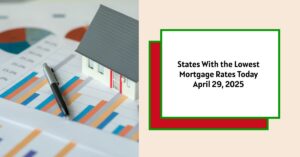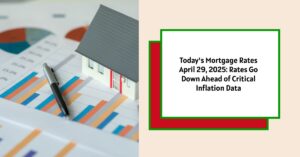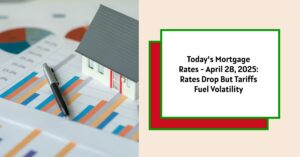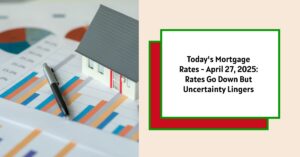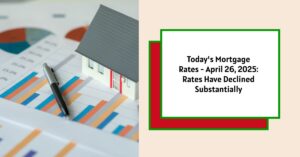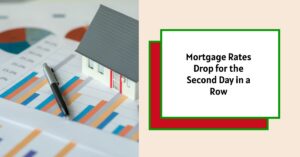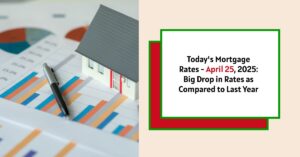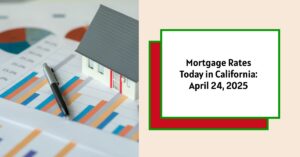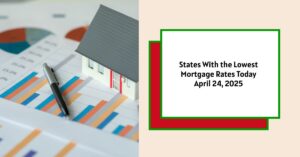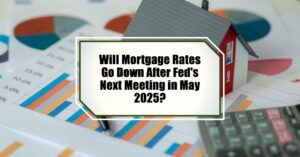Looking for the best deal on a mortgage? Today, April 29, 2025, the states offering the lowest 30-year mortgage rates are New York, California, and Texas. These states are currently showing averages between 6.76% and 6.83%. If you are buying property in these states then congratulations, this is indeed good news for you.
States With the Lowest Mortgage Rates Today – April 29, 2025
Why Mortgage Rates Matter (And Why They Vary)
Let’s face it, buying a home is probably the biggest financial decision most of us will ever make. And the mortgage rate you get can literally save you (or cost you) tens of thousands of dollars over the life of the loan. It affects your monthly payment, how quickly you build equity, and ultimately, how much the entire house will cost you.
Now, you might be wondering, why do mortgage rates change from state to state? It’s not just some random number. Several factors come into play.
- Different Lenders: Not all lenders operate in every state. This means competition, and ultimately, the rates they offer can vary.
- Credit Scores: States with generally higher average credit scores might see slightly lower rates. Lenders see borrowers with good credit as less risky.
- Average Loan Size: The size of the average mortgage can also affect rates.
- State Regulations: Each state has its own set of regulations that can impact the cost of doing business for lenders.
- Lender Risk Management: Lenders all have different ways of figuring out how much risk they are willing to take. This risk tolerance directly impacts the interest rates they set.
The States With the Best Rates Right Now
As of today, here are the states where you’ll likely find the lowest 30-year mortgage rates for a new purchase:
- New York
- California
- Texas
- Colorado
- Michigan
- Pennsylvania
- Tennessee
These states show average rates clustered between 6.76% and 6.83%.
The States Where Rates Are a Little Higher
On the other end of the spectrum, these states have the highest average mortgage rates:
- Alaska
- West Virginia
- North Dakota
- Washington, D.C.
- Maine
- Vermont
In these areas, expect to see rates ranging from 6.95% to 7.03%.
National Mortgage Rate Trends: A Quick Overview
Let's zoom out a bit and see what's happening with mortgage rates across the US. Here's a snapshot of the national averages:
- 30-Year Fixed: Currently at 6.87%.
- FHA 30-Year Fixed: 7.37%.
- 15-Year Fixed: 5.94%.
- Jumbo 30-Year Fixed: 6.86%.
- 5/6 ARM: 7.20%.
Remember, these are just averages. Your actual rate will depend on your specific situation. It’s also important to understand how national rates have changed recently. According to Zillow's data, 30-year rates have dropped 20 basis points in the last four days. However, earlier in the month, rates surged 44 basis points in a week, shooting the average up to 7.14%, which was its most expensive level since May 2024 (Investopedia).
Important: Don't Fall for the “Teaser Rate” Trap
You know those super-low rates you see advertised online? Be careful! These are often teaser rates designed to grab your attention.
Here’s the catch:
- They might require you to pay points upfront (basically, paying extra interest at closing).
- They could be based on a perfect borrower profile (ultra-high credit score, very small loan).
- They might be for a smaller-than-typical loan.
Always shop around and compare actual rates based on your individual circumstances. Your credit score, income, down payment, and the type of loan you’re applying for will all affect the rate you ultimately get.
Digging Deeper: Factors That Influence Mortgage Rates
Okay, so what really makes mortgage rates go up or down? It’s a mix of economic forces at play.
- The Bond Market: Mortgage rates tend to follow the ups and downs of the bond market, especially the 10-year Treasury yield.
- The Federal Reserve (The Fed): The Fed's monetary policy, especially their actions around buying bonds and supporting government-backed mortgages, has a BIG impact.
- Competition: The more lenders competing for your business, the better! Competition can drive rates down.
It's usually difficult to pin any single change in rates on just one of these factors. They all interact in complex ways. For instance, macroeconomic factors kept the mortgage market relatively low for much of 2021, and the Federal Reserve had been buying billions of dollars of bonds in response to the pandemic's economic pressures. This bond-buying policy is a major influencer of mortgage rates.
Read More:
States With the Lowest Mortgage Rates on April 24, 2025
When Will the Soaring Mortgage Rates Finally Go Down in 2025?
Mortgage Demand Plunges 13% as Rates Hit 2-Month High in April 2025
Why Are Mortgage Rates Rising Back to 7%: The Key Drivers
A Look Back: How the Fed Has Impacted Rates
Starting in November 2021, the Fed began slowing down its bond purchases, and then aggressively raised the federal funds rate to fight inflation. This is important. While the fed funds rate doesn't directly control mortgage rates, it does influence them.
The Fed maintained the federal funds rate at its peak level for almost 14 months, beginning in July 2023. But in September, the central bank announced a first rate cut of 0.50 percentage points, and then followed that with quarter-point reductions in November and December.
The first meeting of the new year saw the Fed opted to hold rates steady and it’s possible the central bank may not make another rate cut for months, meaning we could see multiple rate-hold announcements in 2025.
Your Next Steps: Finding the Best Rate for YOU
Okay, so you know which states have the lowest rates on average. Now what? Here’s my advice:
- Get Your Credit Score in Shape: A higher credit score almost always translates to a lower interest rate. Check your credit report for errors and work on improving your score if needed.
- Shop Around. Seriously. Don't just go with the first lender you find. Get quotes from at least three or four different lenders.
- Consider a Mortgage Broker: A good mortgage broker can do the shopping for you and help you find the best deal.
- Understand the Fees: Don't just focus on the interest rate. Pay attention to all the fees involved (origination fees, appraisal fees, etc.).
- Get Pre-Approved: Getting pre-approved for a mortgage will give you a better idea of how much you can borrow and will make you a more attractive buyer.
Using a Mortgage Calculator
A mortgage calculator can give you a realistic estimate of your monthly payments.
| Input | Description |
|---|---|
| Home Price | The total price of the home you want to buy. |
| Down Payment | The amount of money you're putting down upfront. A larger down payment usually means a lower interest rate. |
| Loan Term | The length of time you have to repay the loan (e.g., 30 years, 15 years). |
| APR | The Annual Percentage Rate. This includes the interest rate and any other fees associated with the loan. It's a more accurate picture of the true cost of the mortgage. If you do not know the APR, you can also enter your Credit Score. |
| Property Taxes | The annual property taxes you'll pay, divided by 12. |
| Homeowners Insurance | The annual cost of your homeowner's insurance, divided by 12. |
A mortgage calculator provides you:
- Monthly Payment broken down into:
- Principal & Interest
- Property Taxes
- Homeowners Insurance
- Mortgage Size
- Mortgage Interest
- Total Mortgage Paid
Summary:
Finding the lowest mortgage rate requires a little research and effort, but it's well worth it. Don't settle for the first rate you see. Shop around, compare your options, and make sure you understand all the fees involved. Your dream home is waiting – make sure you get there with the best possible mortgage!
Work With Norada, Your Trusted Source for
Real Estate Investment in the U.S.
Investing in turnkey real estate can help you secure consistent returns with fluctuating mortgage rates.
Expand your portfolio confidently, even in a shifting interest rate environment.
Speak with our expert investment counselors (No Obligation):
(800) 611-3060
Also Read:
- Will Mortgage Rates Go Down in 2025: Morgan Stanley's Forecast
- Expect High Mortgage Rates Until 2026: Fannie Mae's 2-Year Forecast
- Mortgage Rate Predictions 2025 from 4 Leading Housing Experts
- Mortgage Rates Forecast for the Next 3 Years: 2025 to 2027
- 30-Year Mortgage Rate Forecast for the Next 5 Years
- 15-Year Mortgage Rate Forecast for the Next 5 Years
- Why Are Mortgage Rates Going Up in 2025: Will Rates Drop?
- Why Are Mortgage Rates So High and Predictions for 2025
- Will Mortgage Rates Ever Be 3% Again in the Future?
- Mortgage Rates Predictions for Next 2 Years
- Mortgage Rate Predictions for Next 5 Years
- Mortgage Rate Predictions: Why 2% and 3% Rates are Out of Reach
- How Lower Mortgage Rates Can Save You Thousands?
- How to Get a Low Mortgage Interest Rate?
- Will Mortgage Rates Ever Be 4% Again?
